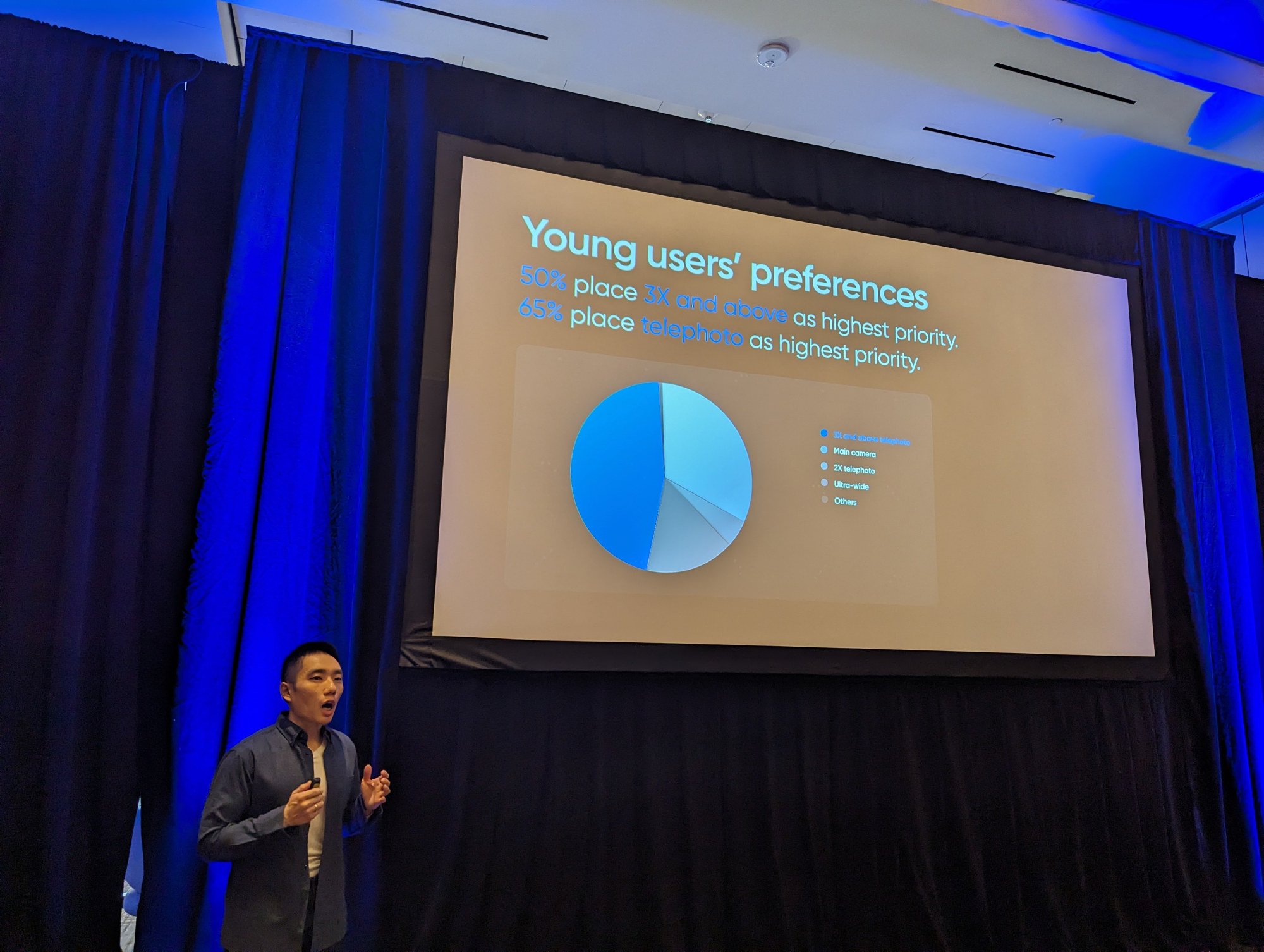
CES 2024: China smartphone brand Realme unveils new handset on sidelines of trade show as its biggest rivals stay home
- The new 12 Pro+ handset to launch at the end of January provides a better zoom lens at a budget price, as Realme caters to young overseas users
- Realme sister brand OnePlus was also in Las Vegas, while Xiaomi, Oppo and Vivo sat out the world’s largest consumer electronics show
Realme said its latest 12 Pro+ handset has the largest sensor in any periscope lens on a smartphone sold globally, but pointed out that the company’s GT 5 Pro handset sold in China technically has a bigger sensor.
“What sets us apart from other brands is that we are fully committed to the young generation,” Sam Cheung, senior marketing communications manager for Realme, said in his presentation during the firm’s hour-long event on the sidelines of CES 2024. “At Realme, we believe that every user at every price segment deserves an outstanding product.”

The 11 Pro+ smartphone launched by Realme last year costs 2,799 yuan, or about US$400.
At its event, Realme said the firm’s slogan, “Dare to leap”, has been changed to “Make it real” as part of a rebranding effort.
China’s Realme surges past 200 million smartphone shipments
Moving forward, Realme aims to double down on what it believes young users want most in a smartphone. The answer it came up with is better photos when zooming in. So the firm has combined a half-inch sensor with a 3x optical zoom periscope lens and built that in its mid-tier line of smartphones.
It also collaborated with watch designer Ollivier Savéo, who previously worked at Rolex and Piaget, among others, on a design evocative of famed Swiss watches.
At a time of rising scrutiny of all things Chinese, Realme made its latest product announcement in a country leading the charge against tech from China and where the company does not even sell smartphones.
For all the other missing Chinese brands – and the smattering of journalists and influencers who showed up to cover the Realme event – it may as well have been part of the show. Vivo and Oppo, two of China’s biggest smartphone brands, were nowhere to be found in Las Vegas, even though Realme spun out of Oppo. OnePlus, the Oppo-owned brand, had suites booked for private showings, but also had no presence on the CES exhibition floor.
Tech giants Alibaba, ByteDance lead China’s return to CES
Realme said it did not exhibit at CES because the 12 Pro+ handset has not officially launched yet. It organised a pre-briefing in Las Vegas because many of its contacts across a variety of markets would be in town for the world’s largest consumer electronics show.
The bulk of US handset sales still happen through mobile network operators, forcing smartphone brands to strike deals to find success. OnePlus has struggled with this situation, despite the glowing reviews received by many of its devices from US tech media.
Realme said it was still trying to cooperate with a US carrier to get into the market, where 87 per cent of teenagers own an iPhone, according to a survey by investment bank Piper Sandler.
Meanwhile, Realme has been selling in parts of Europe and Latin America, which it described as an important market for the company’s upcoming 12-series handsets.

